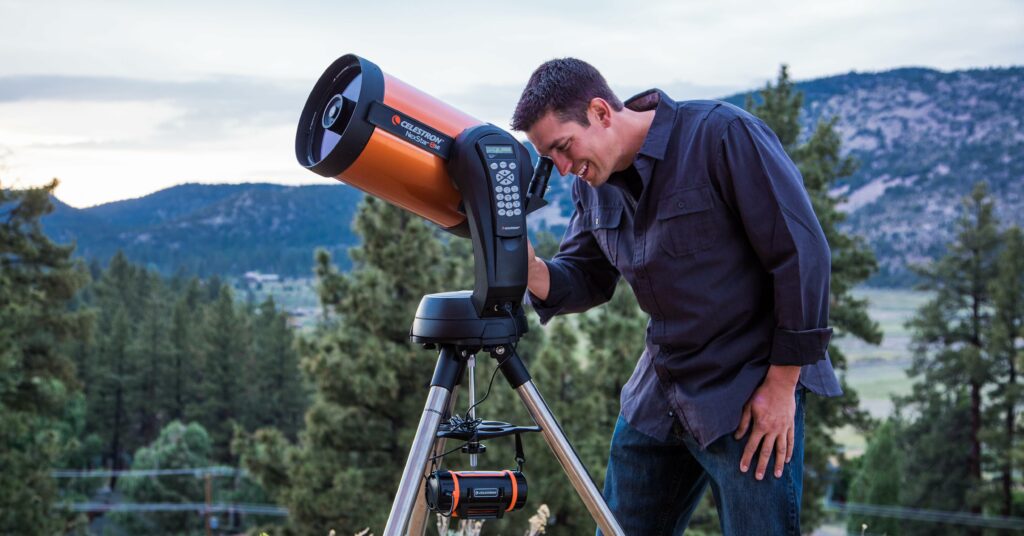Cosmic Wanderer: Comet C/2023 A3 Returns to Our Sky after 80,000 Years
Comets have long been regarded as omens of change, Comet C/2023 A3, Tsuchinshan-ATLAS, the Cosmic wanderer returns to our sky after 80,000 years. As the sun was rising on San Francisco over the Golden Gate Bridge on September 27, a dubbed “comet of the century” made its spectacular appearance. Find out where the comet of the century goes this autumn.

Stargazers and astronomers alike have their binoculars fixed on the skies this year, eagerly awaiting the arrival of the celestial visitor that’s been dubbed the “most anticipated comet of the century” – Comet C/2023 A3 (Tsuchinshan-ATLAS). Discovered in early 2023 by two sky-survey projects – the Tsuchinshan Observatory in China and the ATLAS project in Hawaii – this cosmic wanderer started a spectacular show as it returns after 80,000 years.

The buzz surrounding Comet C/2023 A3 is justified. Comets are unpredictable, and while some fizzle out before they reach a level of visibility to the naked eye, others deliver jaw-dropping visual displays that linger in the memory for years. This particular comet made its closest approach to the Sun (called perihelion) on September 28, 2024 and swing by Earth shortly after. For stargazers, the optimal viewing window is between October 9 and October 20, 2024, when the comet will likely be most visible, climbing higher in the sky each night.
What makes Comet C/2023 A3 so special on our sky?
Comets have fascinated humanity for millennia. Often called “dirty snowballs,” they are composed of ice, rock and dust, and when they pass close to the Sun, the heat causes their icy nucleus to sublimate, creating a glowing coma and sometimes a bright tail that can stretch millions of kilometers. But what makes Comet C/2023 A3 so exciting?
One of the reasons Comet C/2023 A3 is due to its potential to shine brightly in the night sky. Early predictions suggest that it might reach a magnitude that makes it visible to the naked eye.
If the comet performs as expected, it could become as bright as some of the stars in the night sky, or even brighter. This brightness is always a key factor in determining how visible and awe-inspiring a comet will be.
As the comet approaches the Sun, its icy surface starts to vaporize, releasing gas and dust that will form its signature tail. This tail could become quite dramatic, stretching across a significant portion of the sky. Depending on its trajectory and the composition of the dust and gas, the tail may also display multiple colors, such as bluish hues from ionized gases and white or yellowish streaks from dust particles reflecting sunlight.
Comet C/2023 A3 is a long-period comet, meaning it takes thousands of years to complete its orbit around the Sun. Its last visit to our inner solar system may have occurred around 80,000 years ago, long before human civilizations as we know them existed. This makes its current journey through the solar system a once-in-a-lifetime event for skywatchers.
How to See Comet C/2023 A3
For those eager to witness this celestial spectacle, the prime viewing period will be on 9th October 2024, showing well between October 12 and October 20. During this window, the comet will be located in the evening sky, progressively climbing higher each night. Early observations suggest that the comet will be visible in both the Northern and Southern Hemispheres, with the best views occurring just after sunset.
While Comet C/2023 A3 is expected to be visible to the naked eye, using binoculars or a telescope can enhance the viewing experience, allowing viewers to see more of the comet’s details, such as its coma and tail. Dark-sky locations away from city lights will offer the best chance to enjoy this rare event in all its glory.
After its prime viewing period in October, Comet C/2023 A3 will begin to fade as it continues its journey away from the Sun and Earth, back into the outer reaches of the solar system. Slowly, its brightness will diminish, and by late October or November, it will likely no longer be visible to the naked eye. However, its brief but brilliant appearance will leave a lasting impression on those lucky enough to witness it.
What makes comets like C/2023 A3 so fascinating is their unpredictability. Comets can sometimes brighten dramatically or fizzle out entirely as they approach the Sun. The anticipation surrounding this comet is reminiscent of past famous comets, like Comet Hale-Bopp in 1997 or Comet NEOWISE in 2020, both of which provided unforgettable sky shows.
Comets have long been regarded as omens or harbingers of change, appearing suddenly in the sky, seemingly out of nowhere and capturing the imagination of those who see them. While today we understand much more about the science behind these celestial travelers, the awe and wonder they inspire remain the same.
As reported by BBC, Comet C/2023 A3 is not just another astronomical event on the calendar – it’s a reminder of the vastness and mystery of the universe. As it streaks across the night sky in October 2024, it will serve as a reminder that our solar system is filled with wonders, both near and far and that every now and then, the cosmos offers us a front-row seat to a rare and unforgettable display of nature’s beauty.
Prepare your binoculars – Comet C/2023 A3 is poised to light up the sky as it returns after 80,000 years of cosmic wonder.
Do you want to share your story and inspire our readers ? Know that YOUR EXPERTISE is paving the way for a fairer, happier society.



